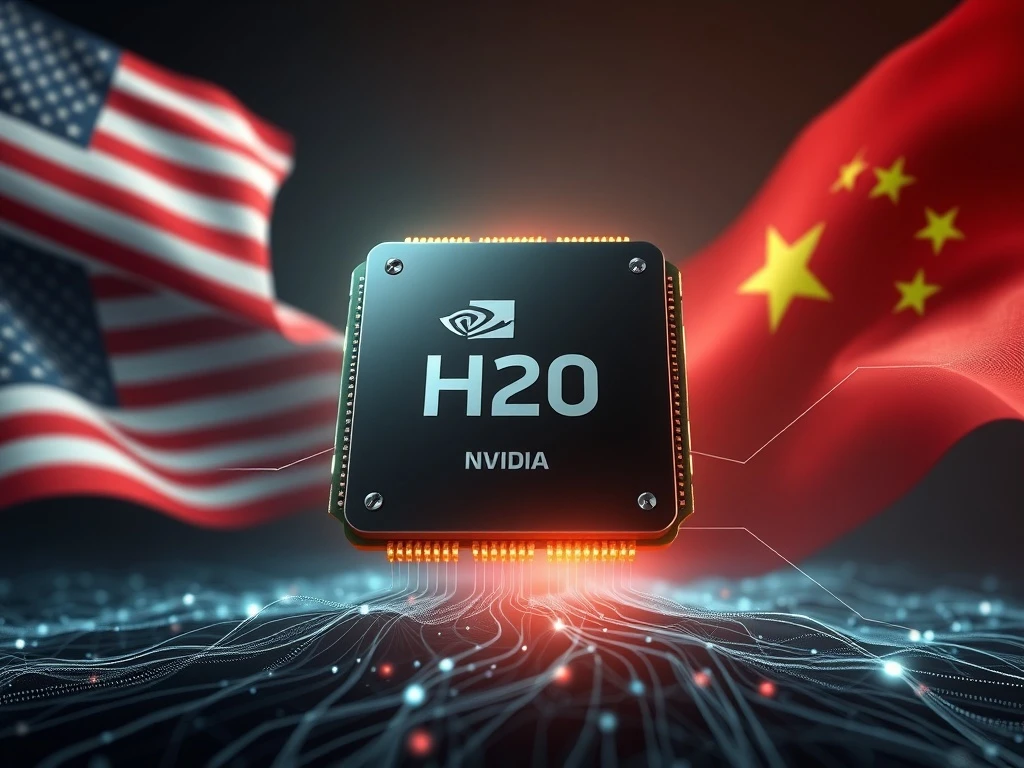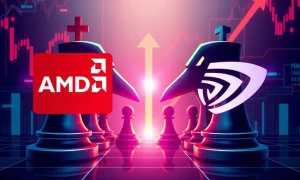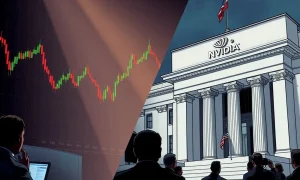The global technology landscape faces unprecedented challenges. At its core lies the intense rivalry between the United States and China. Indeed, this geopolitical struggle profoundly impacts the semiconductor industry. Specifically, the Nvidia H20 chip has emerged as a focal point. It embodies the complex dance between innovation and national security. This article explores how the Nvidia H20 chip became central to this escalating trade war.
Understanding the US-China Semiconductor Divide
The United States has imposed strict export controls. Moreover, these rules aim to limit China’s access to advanced computing chips. Washington cites national security concerns. For instance, American officials fear China could use powerful chips for military modernization. They also worry about surveillance technology. Consequently, these restrictions target high-performance graphics processing units (GPUs). Such GPUs are vital for artificial intelligence (AI) development. The goal is to slow China’s technological progress. Many US companies faced difficult choices. They had to comply with these new regulations. This significantly altered their business strategies in China.
Nvidia’s Strategic Response: The Nvidia H20 Chip and Beyond
Nvidia, a leading chip designer, felt the immediate impact. Its high-end A100 and H100 GPUs became subject to export bans. These chips were highly sought after in China. Chinese tech giants relied on them for AI training. Therefore, Nvidia developed specific products for the Chinese market. The Nvidia H20 chip is a prime example. It is a modified version of Nvidia’s advanced chips. This chip complies with US export restrictions. It offers lower performance compared to its unrestricted counterparts. However, it still provides substantial AI capabilities. Nvidia also introduced the L20 and L2 chips. These products cater to different market segments within China. The company sought to maintain its market presence. It also aimed to adhere to US government mandates.
Specifications and Limitations of the Nvidia H20 Chip
The Nvidia H20 chip belongs to the Hopper architecture. It features reduced compute performance. Its interconnect speed is also lower. Specifically, the H20 has a lower theoretical peak performance. This limits its use in large-scale AI training models. Crucially, the US government designed these restrictions carefully. They aim to prevent China from achieving “supercomputing” capabilities.
However, the H20 still offers valuable features:
- Significant memory bandwidth: This allows for fast data transfer.
- Substantial memory capacity: It handles large datasets efficiently.
- Suitability for AI inference: The chip excels at deploying trained AI models.
- Capability for smaller AI model training: It can still develop new, compact AI solutions.
Therefore, Chinese companies can still develop AI. They just cannot do so at the same rapid pace as before. This situation creates a challenging environment for both sides.
China’s Drive for Semiconductor Self-Sufficiency
The US export controls accelerated China’s domestic efforts. Beijing has long prioritized semiconductor independence. The restrictions only intensified this resolve. China is heavily investing in its chip manufacturing. Companies like Huawei and SMIC are receiving massive state support. They aim to produce advanced chips domestically. This includes both design and fabrication. However, achieving parity with global leaders remains difficult. China still lacks critical equipment and expertise. Furthermore, developing cutting-edge lithography tools takes time. It also requires immense capital. The long-term goal is to reduce reliance on foreign technology. This strategic imperative is clear. The Nvidia H20 chip saga underscores this ongoing ambition.
Global Supply Chain Repercussions and Market Dynamics
The US-China tech rivalry disrupts global supply chains. Chip manufacturers face complex decisions. They must balance market access with compliance. For example, companies like TSMC, a major chip fabricator, are caught in the middle. They produce chips for both US and Chinese firms. Export controls force them to adapt production. This often leads to increased costs. Furthermore, it also causes delays. Moreover, the demand for specialized chips like the Nvidia H20 chip reflects this new reality. The market for restricted chips is evolving. Chinese companies are exploring alternatives. They are also optimizing existing hardware. This geopolitical tension affects stock prices. It influences investment decisions worldwide. The future of global tech collaboration hangs in the balance.
The Geopolitical Chessboard: Beyond the Nvidia H20 Chip
The trade war extends beyond a single chip. It encompasses broader technological competition. Areas like quantum computing, biotechnology, and 5G are also contested. The Nvidia H20 chip symbolizes this wider struggle. Both nations view technological supremacy as vital. It impacts economic power and military strength. Diplomacy plays a crucial role. However, tensions remain high. The US seeks to maintain its technological lead. China aims to catch up and surpass. This dynamic creates an unpredictable future. International alliances are also shifting. Countries must navigate this complex geopolitical chessboard carefully. The stakes are incredibly high for everyone involved.
Conclusion
The Nvidia H20 chip stands as a testament to the intricate relationship between technology and geopolitics. It represents Nvidia’s attempt to navigate stringent US export controls while retaining access to the vast Chinese market. However, its existence also highlights the deepening chasm in US-China tech relations. This ongoing trade war forces innovation, reshapes supply chains, and accelerates China’s drive for self-sufficiency. The H20 chip is not merely a piece of hardware; it is a symbol of a global power struggle. Its journey reflects the challenges and complexities of a world increasingly divided by technological competition. The implications for the semiconductor industry and global economy are profound and long-lasting.
Frequently Asked Questions (FAQs)
1. What is the Nvidia H20 chip?
The Nvidia H20 chip is a modified graphics processing unit (GPU) developed by Nvidia. It is specifically designed to comply with US export restrictions on advanced semiconductors to China. It offers lower performance compared to Nvidia’s top-tier chips like the A100 or H100, but still provides significant capabilities for AI inference and smaller AI model training.
2. Why was the Nvidia H20 chip developed?
Nvidia developed the H20 chip to maintain its presence in the crucial Chinese market after the US government imposed strict export controls. These controls banned the sale of high-performance AI chips to China, citing national security concerns. The H20 represents Nvidia’s effort to offer a compliant, yet still capable, solution to Chinese customers.
3. How does the H20 chip compare to other Nvidia GPUs?
The Nvidia H20 chip is based on the Hopper architecture, similar to the H100. However, it features reduced compute performance and lower interconnect speeds to meet US export control thresholds. While it has less raw processing power than the H100, it retains high memory bandwidth and capacity, making it suitable for specific AI workloads that do not require peak performance.
4. What are the implications of the H20 chip for China’s AI ambitions?
The H20 chip’s limitations mean China cannot achieve the same rapid pace of large-scale AI development as with unrestricted chips. However, its availability still allows Chinese companies to pursue AI inference and develop smaller, more efficient AI models. This pushes China to optimize its use of available hardware and accelerate its domestic semiconductor development efforts.
5. How do US export controls impact the global semiconductor industry?
US export controls create significant disruptions for the global semiconductor industry. They force chip manufacturers and designers to adapt their product lines and supply chains, leading to increased costs and potential delays. Furthermore, these controls accelerate China’s push for self-sufficiency, potentially reshaping the competitive landscape and fostering a more fragmented global tech ecosystem.
6. What is the future outlook for Nvidia in the Chinese market?
Nvidia faces an uncertain future in the Chinese market. While the Nvidia H20 chip allows the company to retain some market share, the escalating trade tensions and China’s strong push for domestic alternatives mean increasing competition. Nvidia will likely continue to navigate a complex regulatory environment, balancing compliance with market demand.






